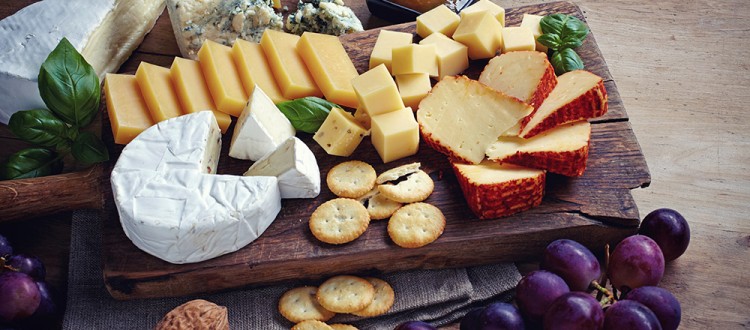Training your Palate for Cheese
Have you ever uttered the phrase “I hate blue cheese” or “oh that is just disgusting”? Chances are you are not alone. Whether it is specialty cheese or other specialty foods and beverages the tendency when trying new things is to react from the standpoint of loving it or hating it.However, when you are attempting to train your palate for cheese you want to approach it the way you would if you were building a reference file or rolodex. The ability to taste the subtleties of cheese and recognize the desirable characteristics of each type increases with experience. In the same way that lifting weights trains your muscles, tasting cheese often (even the ones you think you “hate”) will help you build a discerning palate and find ways to enjoy a wide variety of cheeses!
There are a couple of things to keep in mind when starting to train your palate. Recognizing that there are certain things that affect the way you taste will help you set yourself up for success.
- Sensitivity to flavors and smells decrease with age. So, challenge yourself to try things you may have formerly not enjoyed because you may be surprised to find that you like some stronger or bolder flavors.
- Hunger increases sensitivity but it also can make you rush through tasting to satiate the hunger. You will have better luck tasting if you are not feeling like you haven’t eaten in days!
- Alcohol decreases sensitivity. I know what you are thinking, what about all these cheese and wine pairings? While pairing is wonderful, if you are trying to develop your palate for cheese it is better to start au natural and work up to finding enjoyable pairings at a later time.
- Fatigue will decrease the experience. This goes for fatigue of your body as well as fatigue of your palate. Be mindful that like any form of exercise, your palate can only taste so much. Be mindful that the goal is to train your palate over time; it is more of a marathon and not a sprint.
Now you are ready to embark on the adventure of tasting cheese. While you don’t have to be a cheese specialist it does help to read a little bit about the family or type of cheese that you are going to taste. Remember, you are going to try to start tasting cheese from the perspective of how truly they represent the characteristics of the style. The easiest way to do this is to get an ideal of what you should expect to taste to help guide you in the early stages.
Ease into it! Don’t force yourself right out of the gate to tackle blue cheeses or other types that are bold and funky. Start with the milder cheeses and milder families to help get your palate acquainted with the subtle nuances of cheese. Cheddar, Havarti, and Gouda are amazing cheeses but can also lend themselves well to the beginning of your tasting journey.
Limit the tasting to 3 to 5 cheeses at a time. Anything beyond that is going to lead to palate fatigue and will not allow you the full experience. However, training your palate doesn’t have to be boring. You can do a tasting of cheddars at different ages; cheese of differing milk types (goat, sheep, cow); or cheese from different countries (Australian, English, and Irish cheddars). Whatever you choose to taste make sure that you are taking time between samples, cleaning your palate with water, grapes or wafer crackers and tasting mildest to boldest cheeses.
When you are ready to start allow your cheese to come up to temperature out of refrigeration. This is the best way to realize the full flavor and texture of the cheese. You can find many resources on the internet that point you to ideal temperatures based on cheese type.
Use all your senses to experience the cheese. Make an effort to notice the shape and appearance of the rind and paste. Smell the rind and the paste. Each one has a distinctive smell and warms up your palate and senses to taste the cheese fully.
Start with thin slices and then move to thicker slices. Place a thin piece in your mouth and let it melt. Make note of your initial impressions; don’t over think it. Then take a large piece and slowly move it around in your mouth pressing it into the roof of your mouth and over your tongue. Take notice of the flavors from start to finish. How do they compare to your initial notes? Now taste the cheese again and think about how it stacks up against the expected characteristics of the family of cheese you are tasting.
Above all HAVE FUN! Remember this is your journey and it should be enjoyable not torture. If you find yourself dreading the process go back to a milder family or return to one of your favorites. Let your palate be your guide and appreciate how far you come. When you can put cheese in your mouth and not immediately think YUM! or YUCK! you are on your way to building a great cheese palate!
Enjoy your journey!

